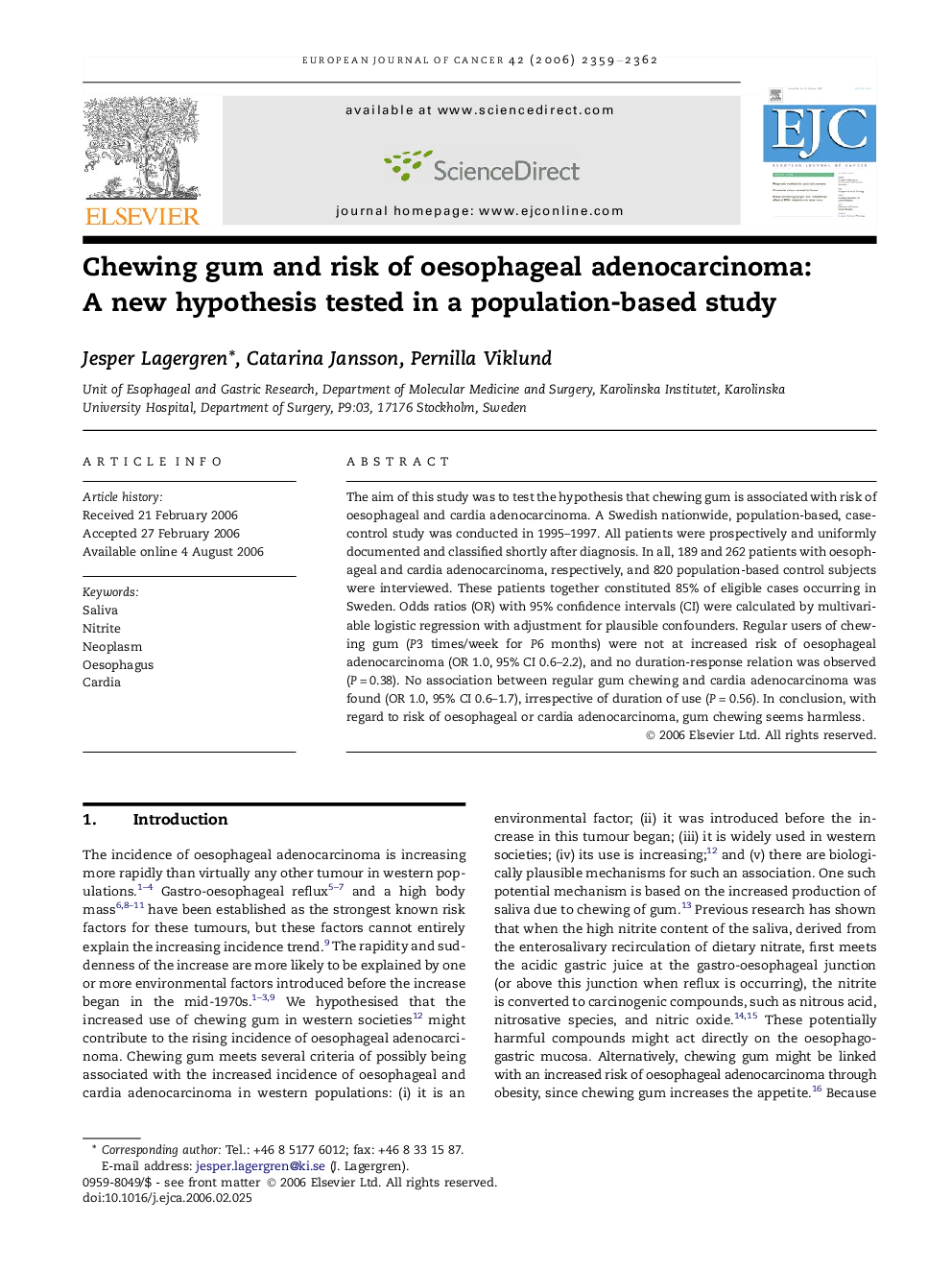| Article ID | Journal | Published Year | Pages | File Type |
|---|---|---|---|---|
| 2124913 | European Journal of Cancer | 2006 | 4 Pages |
Abstract
The aim of this study was to test the hypothesis that chewing gum is associated with risk of oesophageal and cardia adenocarcinoma. A Swedish nationwide, population-based, case-control study was conducted in 1995-1997. All patients were prospectively and uniformly documented and classified shortly after diagnosis. In all, 189 and 262 patients with oesophageal and cardia adenocarcinoma, respectively, and 820 population-based control subjects were interviewed. These patients together constituted 85% of eligible cases occurring in Sweden. Odds ratios (OR) with 95% confidence intervals (CI) were calculated by multivariable logistic regression with adjustment for plausible confounders. Regular users of chewing gum (P3 times/week for P6 months) were not at increased risk of oesophageal adenocarcinoma (OR 1.0, 95% CI 0.6-2.2), and no duration-response relation was observed (PÂ =Â 0.38). No association between regular gum chewing and cardia adenocarcinoma was found (OR 1.0, 95% CI 0.6-1.7), irrespective of duration of use (PÂ =Â 0.56). In conclusion, with regard to risk of oesophageal or cardia adenocarcinoma, gum chewing seems harmless.
Related Topics
Life Sciences
Biochemistry, Genetics and Molecular Biology
Cancer Research
Authors
Jesper Lagergren, Catarina Jansson, Pernilla Viklund,
